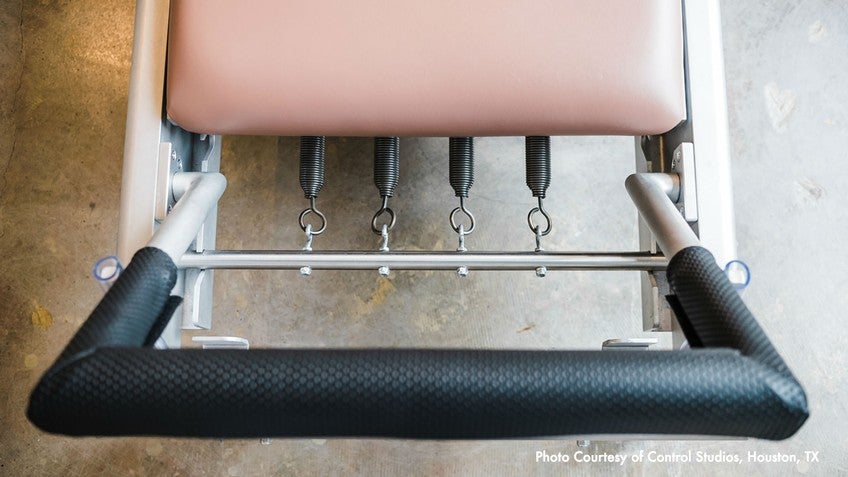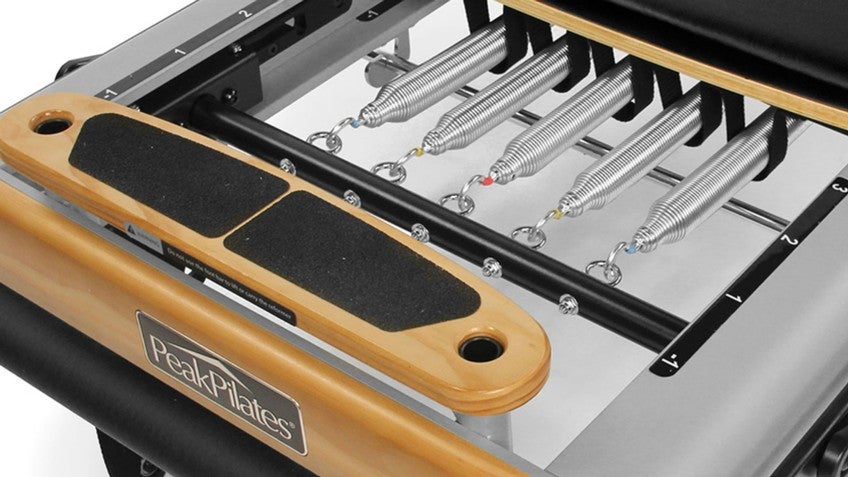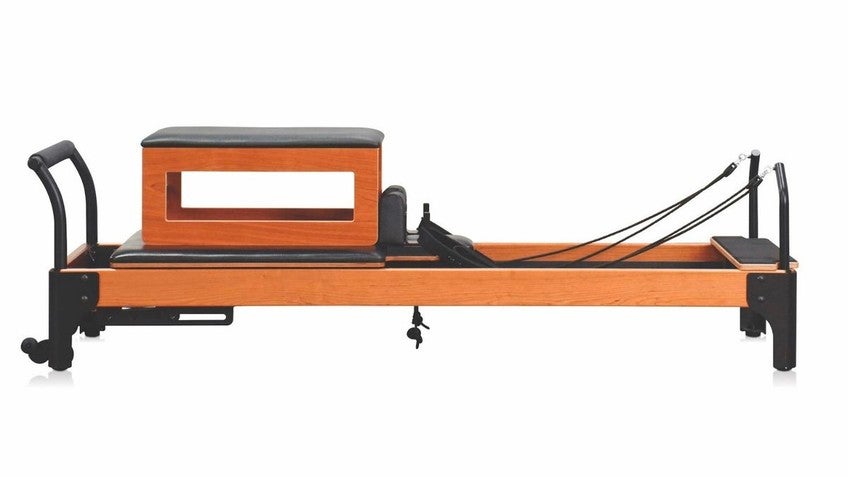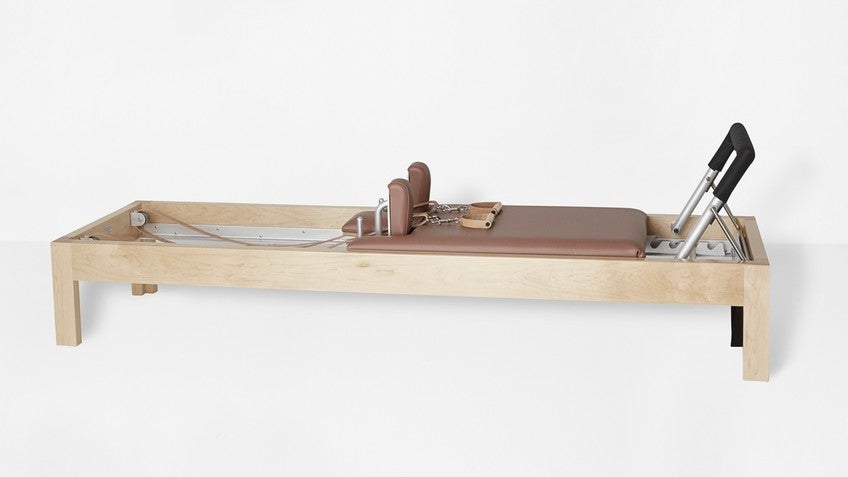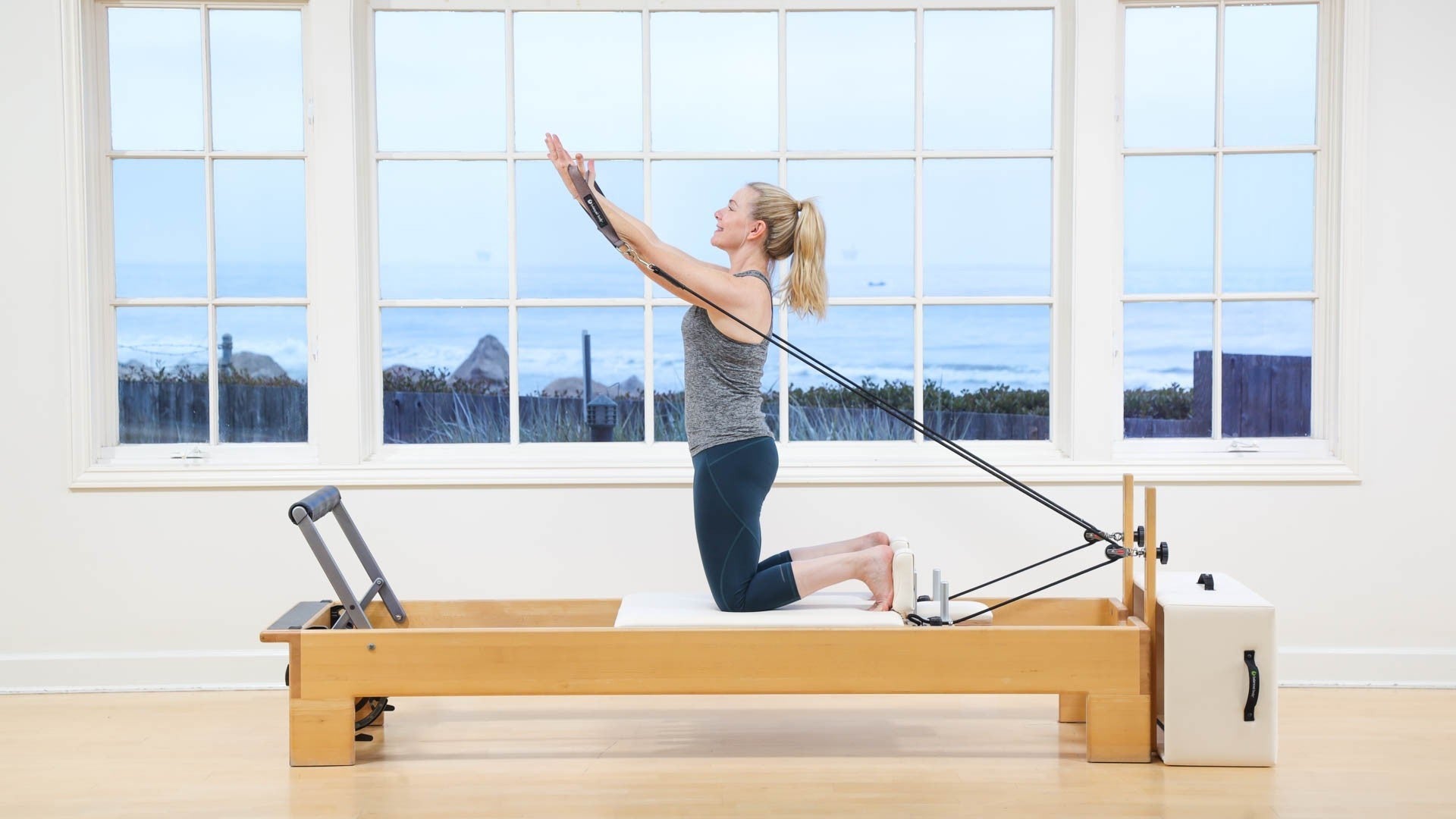
What Pilates Reformer Springs Should I Use?
In a Pilates Anytime class, you may hear our teachers state a range of Reformer spring tension from light to medium to heavy. Springs create resistance on your Reformer, so adding a spring increases resistance and removing one decreases resistance.
Using heavier springs does not necessarily equal a harder workout, however. The springs are there to support you and depending on the exercise, a lighter spring may require more strength and control.
As each brand has its own distinct feel, spring tension varies by manufacturer. Below, you can find our helpful spring guide to common Pilates Reformer brands:
Balanced Body® Reformer Springs
Each color spring corresponds to a different level of resistance:
- Yellow Spring: Very Light Resistance
- Blue Spring: Light Resistance
- Red Spring: Medium Resistance
- Green Spring: Heavy Resistance
Gratz® Reformer Springs
Gratz® Reformers contain four springs of equal resistance.
Peak Pilates® Reformer Springs
Similar to Balanced Body® Reformers, the five Peak Pilates® Reformer springs are color coded:- 2 Blue Springs: Light Resistance
- 2 Yellow Springs: Medium Resistance
- 1 Red Spring: Heavy Resistance
Merrithew® Reformer Springs
Formerly known as STOTT®, Merrithew® Reformers consist of five springs of mixed resistance:
- White Spring: 25% Tension
- Blue Spring: 50% Tension
- Red Spring: 100% Tension
- Black Spring: 125% Tension
When purchasing a Merrithew® Reformer, you have the option to choose one of three spring combinations of varying tension to fit your Pilates needs.
AeroPilates® Reformer Cords
The AeroPilates® Reformer functions a little differently than other brands because it uses bungee cords instead of springs for resistance. Depending on the model, AeroPilates® Reformers use four to five black cords of equal tension. For additional customization, you can purchase heavier (red) cords and lighter (yellow) cords.
Flexia™ Reformer Springs
The Flexia™ Reformer comes with five color coded springs with varying tension:
- 1 White Spring: 25% Tension
- 1 Orange Spring: 50% Tension
- 2 Blue Springs: 100% Tension
- 1 Black Spring: 125% Tension
Pilates Designs® Reformer Springs
Pilates Designs® Reformers contain four springs of equal resistance. Light and heavy springs are also available for purchase.
How Often Should I Replace My Springs?
Depending on use, we recommend replacing your Reformer's springs as soon as you begin to see signs of wear. Common signs to replace your springs are oxidization and finding kinks or gapes in the coil. Left unattended, springs can break during use, which could endanger you or a client. A good rule of thumb is to replace your springs every two years.
Note: Reformer springs made by one manufacturer are not compatible with another Reformer brand.
Different Bodies Require Different Springs
Appropriate spring tensions may vary depending on a person's height, weight, and skill level. A 150-pound experienced Pilates practitioner might require a much different spring resistance than a 110-pound beginner. We note that in most cases, the beginner will likely need more spring tension to be supported safely throughout an exercise.
Your spring tension should allow you to perform each Pilates exercise with control, stability, and confidence. If you understand an exercise and still feel that you are not accomplishing its objective, you may want to adjust your spring tension.
We hope this guide has been helpful to your practice. If you have any questions about Reformer springs, leave a comment below!Does this answer your question?
Comments
You need to be a subscriber to post a comment.
Please Log In or Create an Account to start your free trial.

